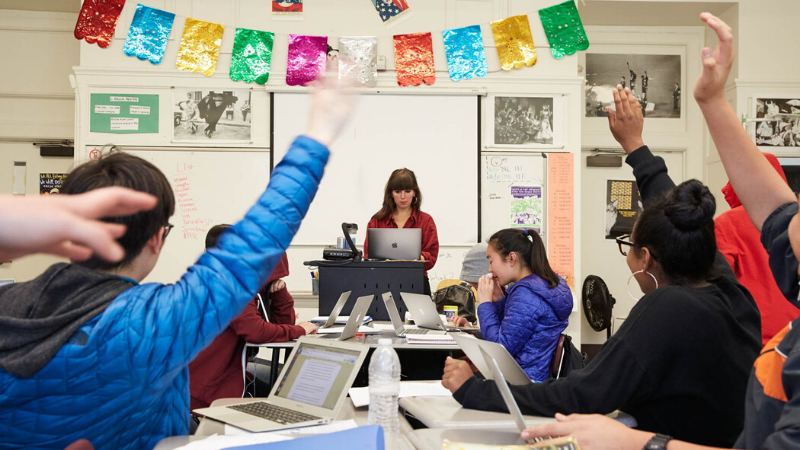As classes resumed online, MHS switched to a block schedule for the first semester of the 2020-2021 academic year. The usual six classes per day were reduced to three. Instead of 50 minutes, classes last for 105 minutes. The odd-numbered periods meet on Mondays and Thursdays, while the even-numbered periods meet on Tuesdays and Fridays. Wednesdays are reserved for 30-minute advisory periods with each student’s third-period class.
Since students only have meetings twice a week, the duration of each class has more than doubled. Even though we are learning for approximately the same amount of time as we did in-person, two class meetings a week is detrimental for students in three key ways.
First, long class meetings make it difficult for students to absorb all of the material being thrown at them. Students might have home environments which make it challenging for them to fully concentrate in class. In addition, a new study by UK neuroscientists published in the Journal of Neuroscience found that there is a limit to the amount of information the human brain can process. “If we try to process too much information we may feel the strain of overload because of the hard limit on our brain capacity,” study author and professor Nilli Lavie at the University of College London said in an article about the study’s findings. This makes it hard for students to focus on crucial information towards the end of a period. If we have classes every day, material could be spread out over the week, helping students better grasp the information. The block schedule makes this impossible to achieve.
Secondly, the average teenager’s attention span is also a factor in how long they can focus. According to the article “What Is the Average Attention Span of a Teenager?”, the average teenager’s attention span is about 3-5 minutes for every year of their age. That means that a 16-year old can actively pay attention for 48-80 minutes. Because of this, 16-year olds might not be able to stay on-task for the remaining 25 minutes of class. Additionally, Statistic Brain, a research institute which gets its information from sources like the US National Library of Medicine and the National Center for Biotechnology Information, stated that technology has been causing the deterioration of people’s attention spans from 12 seconds in 2000 to 8 seconds in 2013. Since we use technology all day for classwork and meetings, our attention spans can further decrease. Unfortunately, since students are at home while classes are in session, they can be prone to distractions such as using their phones in class, making it difficult to focus on a single task for extended periods of time.
Third, it is hard to retain information from a class two days before, due to other commitments students have. During those days, students also have to manage the rest of their classwork along with extracurricular activities, work, and home responsibilities. What they learned in one class on a Monday might be a cloudy memory when they meet again on Thursday.
A student also has the responsibility to listen to lessons and complete their work. It is important for students to have self-control and discipline. We cannot solely blame the administration and teachers, but I believe the staff can work with students to design solutions that both parties may benefit from. I propose three key solutions.
One solution is to have five-to-ten-minute breaks in class. After a barrage of new material, it would be beneficial for students to step back and breathe. Slowing down can help students break down information and understand it, similar to how we eat and digest food—in bite-sized chunks.
Second, I suggest that teachers ask students, perhaps through anonymous Google forms, about the workload in their classes. This way, students can give honest feedback about how much work they deal with and if they feel that the class workload needs adjusting. Both teachers and students have to deal with personal matters, so setting up channels for communication can help decrease the workload for both students and teachers.
The final recommendation is for teachers to have variety in their lessons. Teachers can have a part of the period designated for note-taking and another part for individual work. Having students focus on different tasks for a set number of minutes can prevent them from getting distracted. From my personal experience, this system has helped me better understand the material compared to my other classes that don’t set a certain number of minutes for different kinds of activities. In this manner, teachers make the effort to structure the lesson and activities, while the students make the effort to do their part by completing their assignments on time.
Although having two class meetings a week is inefficient, I strongly believe that there are solutions which can benefit and enable everyone to learn as much as they can.

